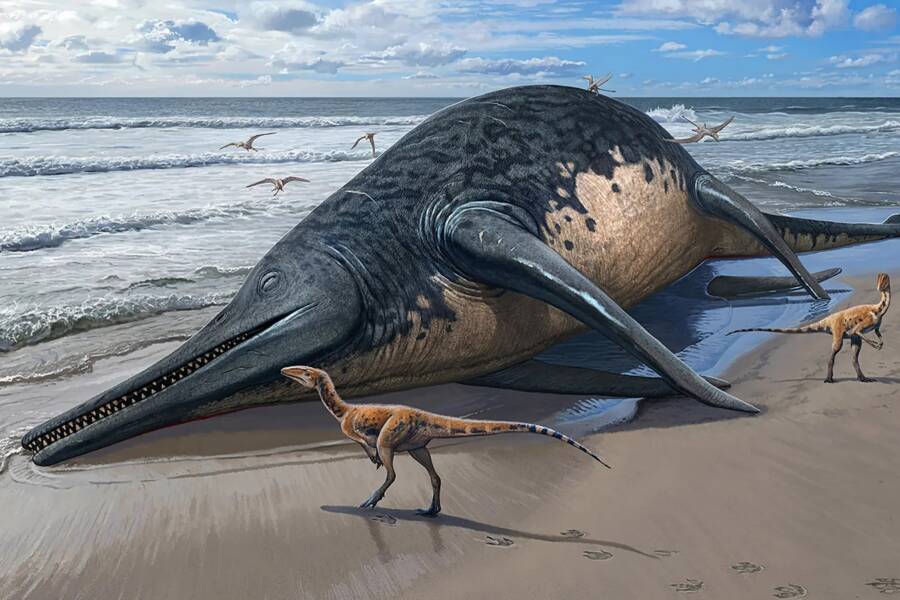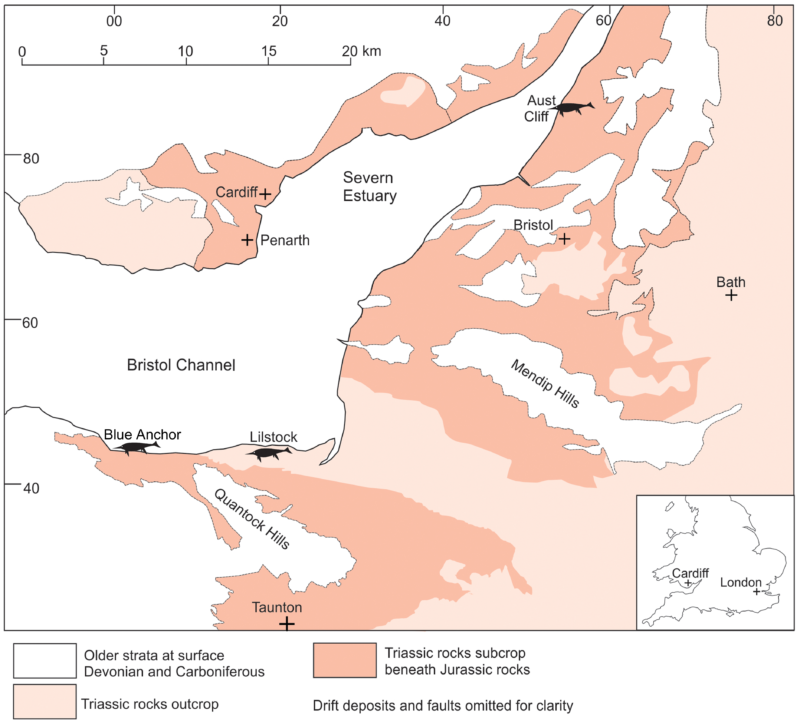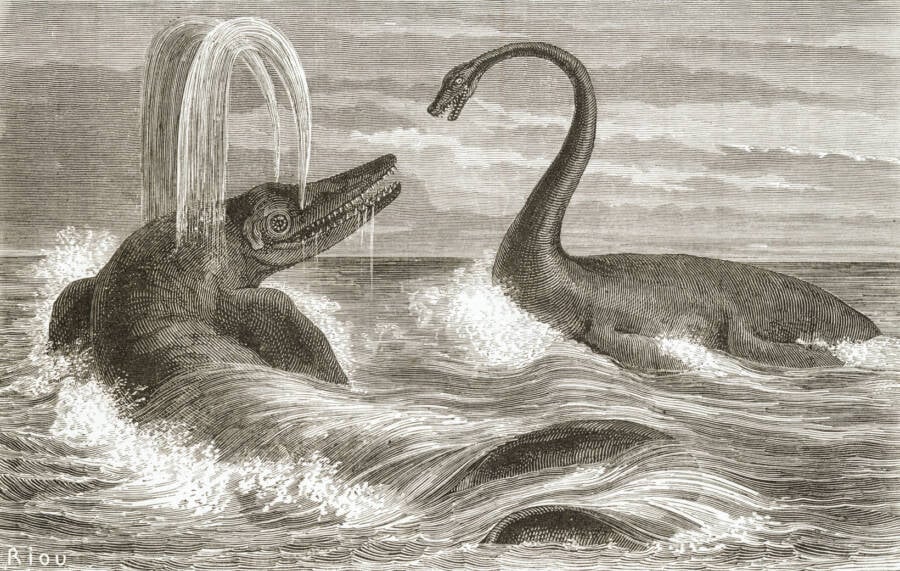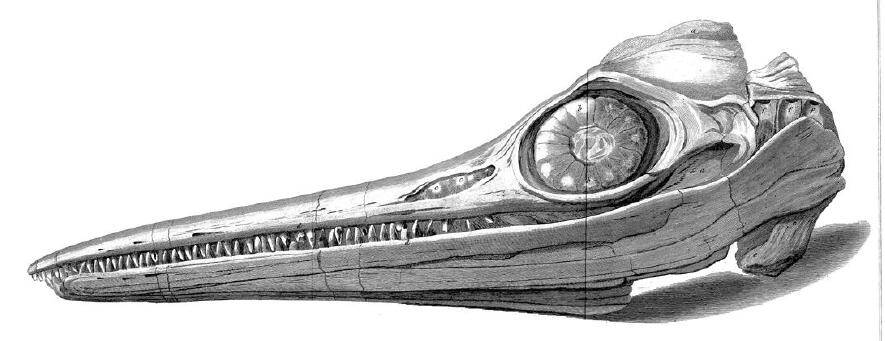Researchers who examined the fossils believe that they belong to a new species of prehistoric ocean giant, Ichthyotitan severnensis, which reached 82 feet in length.

Sergey KrasovskiyIchthyotitan severnensis likely reached 82 feet long and lived some 200 million years ago.
Ruby Reynolds of Braunton, England has been fossil hunting for as long as she’s been able to walk. And back in 2020, when she was 11 years old, Ruby came across the fossil of an ichthyosaur that experts now believe could be the largest marine reptile of all time.
Researchers who studied the fossils contend that they belong to a previously-unknown giant ichthyosaur, Ichthyotitan severnensis, which probably went extinct at the end of the Triassic period.
Ruby Reynolds Discovers The Giant Ichthyosaur Fossils
On a spring day in May 2020, 11-year-old Ruby Reynolds set out for the shores of the River Severn near the village of Blue Anchor so that she and her father, Justin, could go fossil hunting. Ruby had been scouring the sand for fossil fragments since the age of three, and it wasn’t long before she and her father noticed a piece of fossilized bone sitting on a rock.
“We were both excited as we had never found a piece of fossilized bone as big as this before,” Justin Reynolds told The New York Times.
Encouraged by the discovery, Ruby continued to search the beach — and came across an even bigger bone nearby.

Lomax et al., PLoS ONE 2024From left to right: Paleontologist Dean Lomax, Ruby Reynolds, Justin Reynolds, and fossil hunter Paul de la Salle.
After conducting some research, Justin learned that a fossil hunter named Paul de la Salle in nearby Lilstock had discovered an ichthyosaur jawbone in 2016. The discovery had been described in a paper by University of Bristol paleontologist Dean Lomax. So, Justin contacted them both — and the group returned to the River Severn to hunt for fossils together.
Their efforts were soon rewarded. Digging in muddy sand, the group came across a fragmented bone that was probably once seven feet long.

Lomax et al., PLoS ONE 2024A map showing where the two fossils were discovered. Thrillingly, researchers believe that they belong to the same species, a new kind of ichthyosaur called Ichthyotitan severnensis.
Thrillingly, the fossils found near River Severn and the ones found in Lilstock seemed to belong to the same species, a new kind of ichthyosaur that researchers have now dubbed “Ichthyotitan severnensis” — or “the giant fish lizard of the Severn.”
“I didn’t realize when I first found the piece of ichthyosaur bone how important it was and what it would lead to,” Ruby told The New York Times. “I think the role that young people can play in science is to enjoy the journey of exploring as you never know where a discovery may take you.”
Ichthyotitan Severnensis, An Unprecedented New Species Of Prehistoric Marine Giant

Public DomainA 19th-century depiction of an ichthyosaur and plesiosaur.
According to a new study about Ichthyotitan severnensis published in the journal PLOS One, this species of ichthyosaur was huge — and was probably still growing when it died.
Researchers believe that it was about 82 feet long, or roughly the size of a modern-day blue whale. Other ichthyosaurs varied in size, with the largest being around 60 feet.
These giant sea creatures were predators who once dominated the seas. Researchers believe that Ichthyotitan severnensis lived during the end of the Triassic period, 251.9 million to 201.4 million years ago.
Lomax explained to The New York Times that the species likely died out during a mass extinction event at the end of the Triassic period and that in events like these, “it’s the big things that go first.”

Public DomainA sketch of an ichthyosaur skull found by Mary and Joseph Anning in the early 19th century.
Indeed, Ruby Reynolds’ discovery just goes to show how dramatically life on Earth has changed since the time of the dinosaurs. And it’s a good reminder that relics of that time like are all around us.
“If you have a keen eye, if you have a passion for something like that,” Lomax remarked, “you can make discoveries like this.”
After reading about Ichthyotitan severnensis, discover the remarkable story of Mary Anning, the 19th-century fossil hunter who discovered the ichthyosaur in 1811. Or, learn about some of the weirdest dinosaurs to ever walk the Earth.





